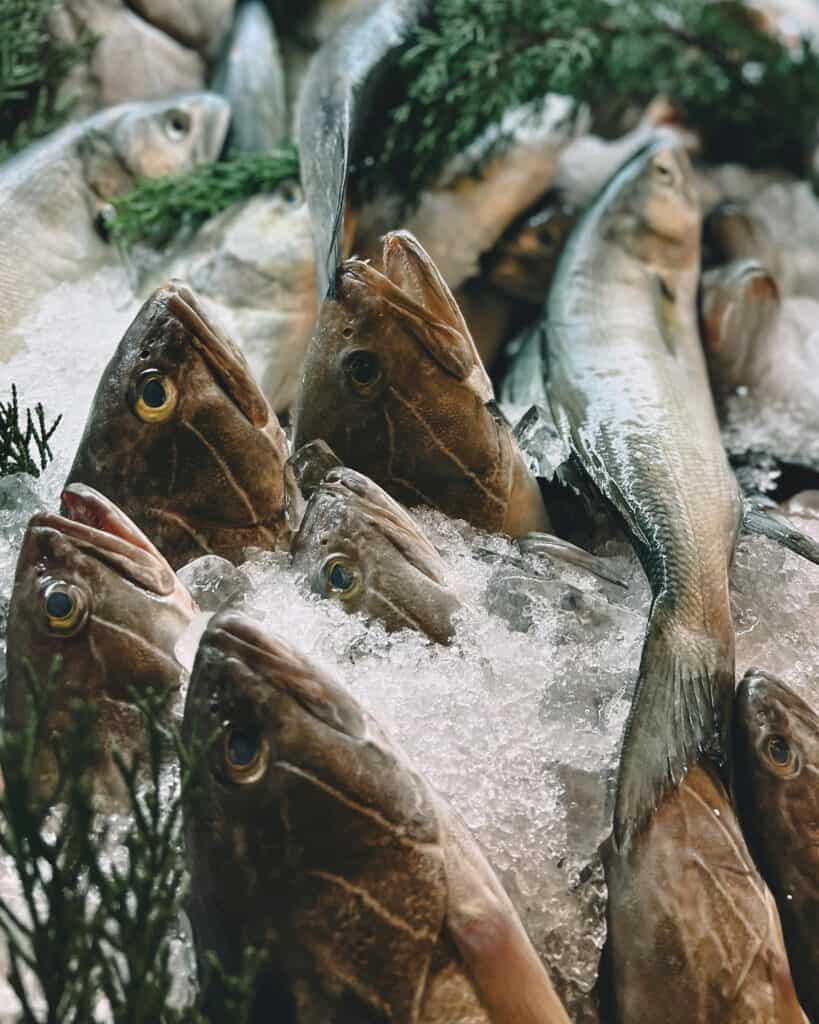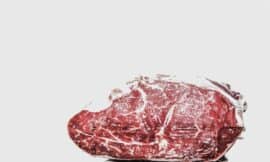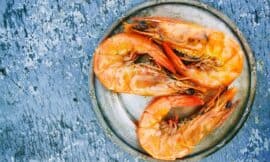So How long does frozen food last? Frozen foods can last from 1 month to a year, depending on the item. Ensure optimal freshness and safety by consulting specific storage guidelines. Maximize the shelf life of your frozen foods with proper storage.
Understanding freezer storage is crucial to maintaining the quality and safety of frozen foods. The temperature of your freezer plays a major role in how long frozen foods can last. According to the USDA, a freezer should be kept at 0°F (-18°C) or below to ensure the safety and quality of frozen foods. Additionally, proper packaging is important to prevent freezer burn, which occurs when moisture is lost from the food, causing it to become dry and tough.

We all have that one food item that we love to stock up on, but we’re not sure how long it will last in the freezer. Freezing food is a great way to preserve it for longer periods, but it’s important to know how long it can last in the freezer without compromising its quality or safety. In this article, we’ll explore the shelf life of frozen foods, how to properly store them, and how to safely thaw and cook them.
Shelf life of frozen foods varies depending on the type of food and how it’s stored. Some foods can last up to a year in the freezer, while others may only last a few months. It’s important to know the shelf life of the foods you’re freezing to ensure that they’re still safe to eat when you thaw and cook them. In the next section, we’ll dive deeper into the shelf life of different types of frozen foods.
Key Takeaways
- Proper freezer storage is crucial to maintaining the quality and safety of frozen foods.
- The shelf life of frozen foods varies depending on the type of food and how it’s stored.
- Thawing and cooking frozen foods properly is important to ensure their safety and quality.
Shelf life of Various Frozen Food and How long does frozen food lasts
Below is a table on storage time for various frozen food category(Source):
| Food Category | Storage Time (Freezer) |
|---|---|
| Poultry | 9 months to 1 year |
| Ground Meat | 3-4 months |
| Steaks, Chops | 4-12 months |
| Fish | 6 months |
| Shellfish | 2-12 months |
| Cooked Meat/Poultry | 2-6 months |
| Pizza | 1-2 months |
| Soups and Stews | 2-3 months |
Understanding Freezer Storage
When it comes to frozen food, proper storage is key to maintaining its quality and safety. In this section, we will discuss some important tips for understanding freezer storage.
Optimal Freezer Temperature
To ensure that your frozen food stays fresh for as long as possible, it is essential to store it at the optimal freezer temperature. The USDA recommends keeping your freezer at or below 0°F (-18°C) to prevent the growth of harmful bacteria that can cause foodborne illness. Helping food to stay fresh is one of the main benefits of frozen food.
Preventing Freezer Burn
Freezer burn is a common problem that occurs when food is exposed to the air in the freezer for too long. This can cause the food to become dry, discolored, and tough. To prevent freezer burn, it is important to store your food in airtight containers or freezer bags. You can also wrap the food tightly in plastic wrap or aluminum foil before placing it in the container or bag.
Packaging and Containers
Choosing the right packaging and containers is also important for proper freezer storage. When selecting containers, look for ones that are specifically designed for freezer use. These containers are typically made from thicker, more durable materials that can withstand the extreme cold temperatures of the freezer.
It is also important to label your frozen food with the date it was frozen. This will help you keep track of how long the food has been in the freezer and ensure that you use it before it loses its quality.
In summary, by following these freezer storage tips, we can help ensure that our frozen food stays fresh and safe to eat. By maintaining the optimal freezer temperature, preventing freezer burn, and using the right packaging and containers, we can extend the shelf life of our frozen food and reduce the risk of foodborne illness.
Shelf Life of Frozen Foods
When it comes to frozen foods, the shelf life can vary depending on the type of food. Here are some general guidelines for how long different types of frozen foods can last:
Meat and Poultry
Meat and poultry can last for up to 6-12 months in the freezer. However, it is important to note that the quality of the meat may start to deteriorate after 4-6 months. It is recommended to label the meat with the date it was frozen to ensure that it is used within a reasonable time frame.
Seafood and Fish
Seafood and fish can last for up to 6 months in the freezer. However, it is important to note that some types of fish, such as salmon and tuna, may only last for 2-3 months in the freezer. It is recommended to label the fish with the date it was frozen to ensure that it is used within a reasonable time frame.
Dairy and Produce
Dairy products and produce can last for up to 8-12 months in the freezer. However, it is important to note that the texture of some dairy products, such as cheese, may change after being frozen. It is recommended to label the dairy and produce with the date it was frozen to ensure that it is used within a reasonable time frame.
Baked Goods and Prepared Foods
Baked goods and prepared foods can last for up to 3-6 months in the freezer. However, it is important to note that the texture and taste of these foods may change after being frozen. It is recommended to label the baked goods and prepared foods with the date they were frozen to ensure that they are used within a reasonable time frame.
It is important to note that the expiration date on frozen foods is not always an accurate indicator of when the food will go bad. Freezing can extend the shelf life of food, but it is important to pay attention to the quality of the food after it has been frozen for an extended period of time. Always use your best judgement when deciding whether or not to consume frozen food that has been in the freezer for a while.
Thawing and Cooking Frozen Food
When it comes to thawing and cooking frozen food, there are a few things to keep in mind to ensure that your food is safe to eat and maintains its flavor and texture.
Safe Defrosting Methods
Firstly, it’s important to defrost frozen food safely. The best method is to thaw food in the refrigerator, which allows it to defrost slowly and safely. This method can take some time, so it’s important to plan ahead and give yourself enough time for the food to defrost completely. As a general rule of thumb, allow at least 24 hours for every 5 pounds of frozen food.
If you’re in a hurry, you can also defrost food in the microwave. However, it’s important to use the defrost setting and follow the manufacturer’s instructions to avoid partially cooking the food. Another option is to thaw food in cold water, which can be faster than defrosting in the refrigerator but requires more attention to ensure that the water stays cold and the food doesn’t become waterlogged.
Maintaining Flavor and Texture
When cooking frozen food, it’s important to maintain its flavor and texture as much as possible. One way to do this is to avoid overcooking the food, which can cause it to become dry and lose its flavor. Instead, cook the food until it reaches the appropriate temperature and then remove it from the heat.
Another way to maintain flavor and texture is to season the food well. Frozen food can sometimes lose some of its flavor during the freezing process, so adding herbs, spices, or other seasonings can help to enhance the flavor. Additionally, marinating frozen meat before cooking can help to tenderize it and add flavor.
In summary, thawing and cooking frozen food requires some extra attention to ensure that it’s safe to eat and maintains its flavor and texture. By following safe defrosting methods and using good frozen food handling techniques to maintain flavor and texture, you can enjoy delicious meals made from frozen food.
Maximizing Safety and Quality of Frozen Food
When it comes to frozen food, we want to ensure that we are maximizing both safety and quality. In this section, we will discuss best practices for freezing food and identifying spoilage.
Best Practices for Freezing Food
To ensure the best quality of frozen food, we recommend following these best practices:
- Freeze food as soon as possible to maintain freshness and prevent bacterial growth.
- One of the easiest frozen food hacks is to pack food in airtight containers or freezer bags to prevent freezer burn and exposure to air.
- Label packages with the date of freezing to keep track of storage time.
- Consult a freezer storage chart, like the one provided by the USDA, for optimum freezing times for different types of food.
By following these best practices, we can ensure that our frozen food stays fresh and safe to eat.
Identifying Spoilage
Even with proper freezing techniques, frozen food can still spoil over time. Here are some signs to look out for when identifying spoilage:
- Smell: If the food has a sour or rancid smell, it may be spoiled.
- Color: If the food has changed color or has dark spots, it may be spoiled.
- Texture: If the food has become mushy or has ice crystals, it may be spoiled.
If you notice any of these signs, it’s best to discard the food to avoid the risk of foodborne illness.
In conclusion, by following these best practices for freezing food and identifying spoilage, we can ensure that our frozen food stays safe and of the highest quality.



